PDF Provided by NATAP
Am J Gastroenterol advance online publication, 15 April 2014; doi: 10.1038/ajg.2014.66
Andrew J. Muir , MD, MHS1
Hepatitis C virus (HCV) treatment took a major step forward at the end of 2013 with the approvals of the second-generation protease inhibitor simeprevir (Olysio) and the nucleotide polymerase inhibitor sofosbuvir (Sovaldi). The interferon-free regimen of sofosbuvir and ribavirin is now available for genotype 2 and 3 patients. This regimen for 12 weeks is highly effective for genotype 2, whereas genotype 3 has proven to be more challenging and requires 24 weeks of therapy. Genotype 1 patients have reduced exposure to peginterferon-α with a 12-week regimen with sofosbuvir and a 24-week regimen with simeprevir. Genotype 4, 5, and 6 patients also respond well to the regimen of sofosbuvir, peginterferon-α, and ribavirin. In another landmark event, the initial approval of sofosbuvir included HCV/HIV-1 coinfected patients. Simeprevir and sofosbuvir also provide a window to the future with sustained virologic response (SVR) rates of >90% for genotype 1 when these agents are combined. Interferon-free regimens for genotype 1 patients have anticipated approvals in late 2014 or early 2015. Clinicians and patients will have the opportunity to discuss and select from current treatment options or await upcoming regimens. These potent new agents provide the tools to cure HCV for many patients.
Introduction
For the past decade, we have been telling patients with hepatitis C virus (HCV) infection about new treatments that would revolutionize care. Previous therapies have required 24Ð48 weeks of interferon-α with significant toxicity. Many patients could not complete therapy because of side effects, and too many were ineligible or declined therapy. The vision has been a regimen that is highly effective for all patients with a reasonable side-effect profile that expands the population eligible for treatment. In 2013, the field took a huge step forward with the release of the second-generation protease inhibitor simeprevir (Olysio) and the nucleotide polymerase inhibitor sofosbuvir (Sovaldi) that was approved by the Food and Drug Administration (FDA) for both HCV monoinfection and HCV/HIV-1 coinfection (1). The sofosbuvir and ribavirin combination for 12 weeks offers sustained virologic response (SVR) rates of >90% for genotype 2 patients (2). Genotype 3 infection has proven to be more challenging for sofosbuvir and ribavirin and requires 24 weeks. Most Americans have genotype 1 infection, and the FDA-approved regimens still require peginterferon-α and ribavirin in the regimen. In 2013, new medicines offered shorter duration for genotype 1 patients with a 24-week combination with simeprevir and a 12-week combination with sofosbuvir (1,3). Although not FDA approved, the availability of simeprevir and sofosbuvir provides an interferon-free regimen for genotype 1 patients and offers a glimpse of our future. The FDA-approved potent interferon-free regimens for genotype 1 are expected in late 2014 or early 2015. We therefore still find ourselves talking to patients about treatments in the future, and clinicians and patients will have the option of proceeding with current treatment or waiting. The American Association for the Study of Liver Diseases (AASLD) and the Infectious Diseases Society of America (IDSA) recently joined together to release HCV guidelines (www.hcvguidelines.org) that will also be discussed (4).
Treat now or wait?
When considering options, several factors might affect the decision to proceed with HCV treatment. The genotype is the major determinant, with the interferon-free regimens available now for genotypes 2 and 3. For the other genotypes, peginterferon-α is the next major consideration. Many patients are motivated to get treated because of concern about progression of disease or more personal considerations to put HCV behind them. For these patients, the clinician must determine that peginterferon-α will be safe. Patients with decompensated cirrhosis (history of ascites, variceal hemorrhage, or hepatic encephalopathy) or Model for End-stage Liver Disease score of >10 have risk of further decompensation and life-threatening infections with peginterferon-α. These patients should be referred to a liver transplant center for discussion of treatment and understanding of the potential role of transplantation in their management (5). Other contraindications to peginterferon-α include unstable psychiatric disorders, autoimmune disorders, advanced heart or lung disease, and low hematologic indices. Some patients may be eligible to take peginterferon-α but are reticent to take such a regimen because of side effects, and delaying treatment will be a reasonable approach for most patients. Some of these Òtreat or waitÓ decisions might hinge on the level of fibrosis. Although the patients with bridging fibrosis or compensated cirrhosis will likely remain stable until the potent interferon-free regimens are available for genotype 1 in late 2014 or early 2015, they should understand their level of fibrosis to help guide their own treatment decisions. All patients should undergo an evaluation of the level of fibrosis to inform these decisions and to guide monitoring of the complications of cirrhosis, including hepatocellular carcinoma. Liver biopsy and transient elastography are generally recommended, and serum markers may also be considered (5). The other major factor is treatment status. Outcomes for treatment-experienced patients are lower with recently approved medications with limited data available, and these patients may be well served to await future options if feasible. The approval of sofosbuvir for HCV/HIV-1 coinfection takes the outcomes with sofosbuvir and builds on the experience with boceprevir and telaprevir where HCV/HIV patients had similar outcomes to HCV monoinfected patients (6,7). HCV/HIV patients should perhaps not be thought of as a special population in HCV but instead as a group at risk for drugÐdrug interactions with some HCV regimens. Treatment for HCV/HIV patients should be strongly considered given the increased risk of fibrosis progression and complications of cirrhosis among this group (8,9).
Genotype 1 infection
Genotype 1 remains the ultimate challenge for HCV infection in the United States. Approximately 70% of Americans with HCV infection have genotype 1, with genotype 1a more common than 1b (10). Boceprevir and telaprevir have been supplanted by the second-generation protease inhibitor simeprevir and the nucleotide polymerase inhibitor sofosbuvir. The summary recommendations from the AASLD/IDSA panel for treatment-naive and prior relapse patients are presented in Figure 1 and for other treatment failure patients in Figure 2. For patients eligible to take interferon, sofosbuvir with peginterferon-α and ribavirin is recommended, with the simeprevir in combination with peginterferon-α and ribavirin as an alternative. For the interferon-ineligible patients, simeprevir and sofosbuvir (with or without ribavirin) is recommended, with sofosbuvir and ribavirin offered as an alternative.
Figure 1 . The American Association for the Study of Liver Diseases (AASLD) / Infectious Diseases Society of America (IDSA) guidelines for treatment-naïve and prior relapse patients. FDA, Food and Drug Administration; PEG, peginterferon- α ; RBV, ribavirin (all doses 1,000 mg body weight 75 kg and 1,200 mg >75 kg).
Figure 2 . The American Association for the Study of Liver Diseases (AASLD) / Infectious Diseases Society of America (IDSA) guidelines for treatmentexperienced nonresponder patients. FDA, Food and Drug Administration; PEG, peginterferon- α ; RBV, ribavirin (all doses 1,000 mg body weight 75 kg and 1,200 mg >75 kg).
Simeprevir Simeprevir received FDA approval in a combination regimen with peginterferon-α and ribavirin for genotype 1 treatment-naive and -experienced patients (3). Simeprevir (see Figure 3) is a second-generation protease inhibitor with advantages of once daily dosing and the lack of additional anemia. Simeprevir is given with the peginterferon-α and ribavirin for the first 12 weeks, and then patients receive peginterferon-α and ribavirin for 12 more weeks (if treatment naive or prior relapse) or 36 more weeks (if prior partial or null response). Simeprevir should not be given to patients who failed the first-generation protease inhibitors boceprevir and telaprevir because of overlapping resistance. Genotype 1a patients treated with simeprevir had lower SVR rates if they had the Q80K variant present at baseline. Commercial testing for the Q80K variant is available, and patients with this variant should consider other treatment options.
Treatment outcomes with simeprevir are summarized in Table 1. The QUEST studies in treatment-naive patients and the PROMISE study in prior relapse patients demonstrated SVR12 rates of ~80% (11,12,13). Lower SVR rates (58Ð65%) were observed in patients with cirrhosis. Treatment-experienced patients were studied in the ASPIRE trial with reasonable outcomes for prior partial and null response patients (14). Although not FDA approved for HCV/HIV-1 patients, the combination of simeprevir with peginterferon-α and ribavirin was effective in this population in the C212 study (15). If this regimen is considered, the HIV regimen needs to be evaluated and adjusted for drugÐdrug interactions seen with a number of agents including nonnucleoside reverse transcriptase inhibitors and HIV protease inhibitors (3). The simeprevir regimen was well tolerated in studies, with most adverse events related to peginterferon-α and ribavirin. Photosensitivity and rash were reported with simeprevir, and patients should use sunscreen and alert their provider if they develop a rash. Mild elevations in bilirubin were reported because of inhibition of the hepatic transporters OATP1B1 and MRP2, but no drug-induced liver injury was observed. Simeprevir should not be given to patients with hepatic impairment because of increased exposure of 2Ð5-fold in patients with Child Pugh Class B and C. Simeprevir also should be used with caution in patients of East Asian ancestry because of increased exposure. Simeprevir is a substrate of CYP3A4 and therefore affected by both CYP3A4 inhibitors and inducers. The FDA package insert or other online tools should be consulted because of interactions with common medications such as statins, calcium channel blockers, antibiotics, herbal therapies, HIV antiretroviral agents, and benzodiazepines (3).
Sofosbuvir Sofosbuvir is a pangenotypic nucleotide polymerase inhibitor that was approved in combination with peginterferon-α and ribavirin for 12 weeks for HCV monoinfection and HCV/HIV-1 coinfection. The approval also included consideration of the interferon-free regimen of sofosbuvir and ribavirin for genotype 1 patients who are ineligible for peginterferon-α and for patients with hepatocellular carcinoma awaiting liver transplantation. For the hepatocellular carcinoma patients, the goal would be to avoid recurrent HCV after transplantation. Sofosbuvir has some advantages over previous direct-acting antiviral agents with its once daily dosing, very limited drugÐdrug interaction profile, absence of a food effect, and lack of significant viral resistance (see Figure 4). In the studies to date, almost all patients who fail sofosbuvir had undetectable HCV RNA on treatment and then relapsed. Other treatment failures were related to poor adherence. The regimen does not include stopping rules, and persistent HCV RNA on treatment should lead to an assessment of adherence. Sofosbuvir is also very well tolerated with adverse events in studies related to the other drugs in the regimen (1).
Studies with the sofosbuvir regimen for genotype 1 are listed in Table 1. The NEUTRINO study evaluated treatment-naive patients and reported an SVR rate of 89% for all genotype 1 patients and 80% among patients with cirrhosis. In a reversal from what has been seen with the protease inhibitors, patients with genotype 1a infection had greater SVR than 1b (92% vs. 82%) (2). This regimen was not studied in treatment-experienced patients but did receive FDA approval for this group. The FDA conducted an analysis assuming that the NEUTRINO patient group included patients who would have been prior nonresponders, defined as patients with bridging fibrosis or cirrhosis, IL28B non-CC genotype, and HCV RNA >800,000 IU/ml). Among the 52 patients in NEUTRINO with these characteristics, 71% achieved SVR (1). The lack of data in clinical trials makes a broad recommendation in treatment-experienced patients difficult, but this FDA analysis could be used to guide patients on the general likelihood of outcomes.
The FDA decision to include an interferon-free regimen for genotype 1 patients in the approval for sofosbuvir was a surprise. This regimen was studied in the SPARE trial conducted by the National Institutes of Health in Washington, DC. The study population had a number of negative predictors of response with a peginterferon-α regimen, including 83% African American, 81% unfavorable IL28B genotype, and 62% high viral load. In the group receiving sofosbuvir and ribavirin for 24 weeks, 17/25 (68%) achieved SVR (16). The PHOTON trial treated patients with HCV/HIV-1 coinfection with sofosbuvir and ribavirin for 24 weeks and obtained similar SVR rates (17). Although these outcomes in these previously difficult-to-treat populations are impressive, interferon-free regimens with higher response rates with 12 weeks of treatment are expected in late 2014 or early 2015. Sofosbuvir and ribavirin should be reserved for genotype 1 patients who are ineligible for peginterferon-α regimens and unable to wait until 2015.
The sofosbuvir regimen with peginterferon-α and ribavirin was well tolerated with treatment discontinuation rate of 2% in the NEUTRINO study. Adverse events were related to the peginterferon-α and ribavirin. Sofosbuvir exposure is stable in patients with hepatic impairment, but treatment is not routinely recommended for decompensated cirrhosis or Child Pugh class B and C patients because of risk of severe adverse events from peginterferon-α. The elimination of sofosbuvir is renal, and no dose adjustment is required with moderate renal insufficiency (glomerular filtration rate >30 ml/min). Sofosbuvir exposure is increased in patients with end-stage renal disease, and an ongoing study is evaluating treatment in this population. Sofosbuvir has less risk of drugÐdrug interactions than other antivirals. Sofosbuvir is a substrate of P-glycoprotein, and inducers such as rifampin and St John's wort should be avoided (1).
Simeprevir and sofosbuvir Although not an FDA-approved regimen, simeprevir and sofosbuvir have been recommended by the AASLD/IDSA guidelines as the first-line option for genotype 1 interferon-ineligible patients and those with prior nonresponse. The regimen was evaluated in the phase 2a COSMOS study. The regimen was well tolerated, but patients should be made aware that the regimen was not studied in a large phase 3 study, limiting the understanding of the safety profile. The initial cohort in COSMOS included 80 prior null responders with mild-to-moderate fibrosis (F0ÐF2) randomized to simeprevir and sofosbuvir with and without ribavirin for 12 or 24 weeks. There was no benefit to the 24-week duration, and the SVR12 rates in the 12-week groups were 96% (26/27) with ribavirin and 93% (13/14) without ribavirin. Cohort 1 included 27 patients with genotype 1a with the baseline Q80K, and 24/27 (89%) achieved SVR with 3 failures because of relapse. This study has been extended to patients with advanced fibrosis and to the treatment-naive patients. These cohorts have not completed follow-up, but SVR4 reports suggest comparable outcomes (18). However, it is unclear whether these impressive results will translate into broad acceptance. This regimen is not FDA approved, and this may affect coverage by payers. The AASLD/IDSA guideline recommendations should support clinicians in discussions of reimbursement with payers.
Future genotype 1 HCV regimens By 2015, two interferon-free regimens are expected to be available in the United States with activity against both genotypes 1a and 1b. Phase 3 data will be presented at scientific meetings in 2014, but recent press releases have already reported SVR rates of >90%. One of these regimens is a combination of sofosbuvir with the NS-5A inhibitor ledipasvir. In the phase 2 ELECTRON study with the cohorts of treatment-naive patients without cirrhosis, SVR 12 rates according to treatment duration were 100% (25/25) for 12 weeks, 100% (21/21) for 8 weeks, and 68% (17/25) for 6 weeks (19). The phase 2 LONESTAR study reported excellent outcomes for protease inhibitor failures with SVR12 of 100% (21/21) when given sofosbuvir, ledipasvir, and ribavirin for 12 weeks (20). The other anticipated regimen is from Abbvie and includes the protease inhibitor ABT-450 boosted with ritonavir, the NS5A inhibitor ABT-267, and nonnucleoside polymerase inhibitor ABT-333. This regimen was studied in the AVIATOR trial with treatment-naive and prior null response patients, and the 12-week duration achieved SVR12 in 99% (78/79) treatment-naive and 93% (42/45) prior null response patients (21).
In addition to these regimens, other HCV agents are moving forward in development. The NS-5A inhibitor daclatasvir has been approved in combination with peginterferon-α and ribavirin in Japan and is expected to be submitted to the FDA soon. Daclatasvir in combination with the protease inhibitor asunaprevir and the nonnucleoside polymerase inhibitor BMS-791325 led to SVR12 rates of >90% in treatment-naive genotype 1 patients, and this regimen has moved to phase 3 studies (22). Although the initial approval for the United States would be with peginterferon-α and ribavirin, daclatasvir in combination with sofosbuvir achieved SVR12 in 98% of 126 treatment-naive genotype 1 patients and 98% of 41 protease inhibitor failures (23). Daclatasvir and sofosbuvir were not studied in phase 3 and are therefore not expected to receive FDA approval but potentially present another option for clinicians.
The message to patients with genotype 1 infection should be especially encouraging. For those with the ability to pay for these medicines, the main angst may come from deciding to take treatment now vs. waiting for the FDA-approved interferon-free regimens. For patients who are eligible for peginterferon-α regimens, the decision may hinge on a personal evaluation of proceeding with treatment compared with waiting. Although most patients with compensated cirrhosis will remain compensated until the potent interferon-free regimens are available in 2015, this stability cannot be guaranteed to every individual patient. The approach to wait and defer therapy may well be appropriate even for patients with cirrhosis, but these patients also need to be aware of the possibility of decompensation and hepatocellular carcinoma if they elect to wait.
Genotype 2 infection
Although long favored by clinicians for the favorable response rates and shorter durations with interferon-containing regimen, genotype 2 has entered a new realm with a highly effective 12-week interferon-free regimen. The combination of sofosbuvir and ribavirin has been approved for treatment-naive and treatment-experienced patients with both HCV monoinfection and HCV/HIV-1 coinfection. The outcomes with sofosbuvir and ribavirin are presented in Table 2. This regimen was very well tolerated across the studies with treatment discontinuation rates of <1%. The FISSION study included treatment-naive patients and compared 12 weeks of sofosbuvir and ribavirin with 24 weeks of peginterferon-α and ribavirin with clear superiority for sofosbuvir. The FUSION study of treatment-experienced patients evaluated 12 vs. 16 weeks of treatment duration with no clear benefit to extending treatment. Although very small sample sizes, the subgroup with cirrhosis suggested concern with SVR in 6/10 treated with 12 weeks and perhaps some increase with SVR in 7/9 patients treated for 16 weeks. The recently presented VALENCE study was encouraging, with 7/8 cirrhotic treatment-experienced subjects achieving SVR after 12 weeks. FUSION also suggested lower treatment responses among patients with prior partial or null response. As a result, the AASLD/IDSA guidelines recommended 12 weeks of sofosbuvir and ribavirin for treatment-experienced genotype 2 patients with a comment that they may benefit from 16 weeks of treatment. All in all, the regimen of sofosbuvir meets the expectation for a highly effective and well-tolerated treatment option for patients with genotype 2 infection (2,24).
Genotype 3 infection
In the peginterferon-α and ribavirin era, genotypes 2 and 3 were generally grouped with the sense of similar responses. In time, genotype 3 emerged as more difficult to treat, and this designation has now continued with sofosbuvir.
Sofosbuvir and ribavirin are approved for treatment-naive and treatment-experienced HCV monoinfected and HCV/HIV-1 coinfected patients with genotype 3. The initial phase 3 studies (FISSION, FUSION, and POSITRON) all demonstrated that the sofosbuvir regimen was well tolerated, but the rate of relapse was unacceptable with the 12-week and 16-week durations ( Table 3) (2,24). The FISSION study found that the overall SVR rate for genotype 3 was not inferior statistically to the response with peginterferon-α but considerably lower than seen with genotype 2. The FUSION trial provided a hint that longer treatment duration was important with improvement at 16 weeks, and most recently the VALENCE trial in Europe demonstrated SVR rates of 93% for treatment-naive patients and 77% for treatment-experienced patients (25). The lower response rate among treatment-experienced patients with cirrhosis demonstrates the continued challenge for this group. The recently presented LONESTAR-2 study presents another option for genotype 3 treatment-experienced patients with sofosbuvir in combination with peginterferon-α and ribavirin for 12 weeks (26). This study enrolled genotype 2 and 3 patients who failed peginterferon-α and ribavirin, and 12/24 genotype 3 patients also had cirrhosis. The SVR rate was 83% for genotype 3, with 10/12 (83%) cirrhotic and 10/12 (83%) noncirrhotic patients achieving SVR. This is not a head-to-head comparison with 24 weeks of sofosbuvir and is not an FDA-approved regimen but does provide a shorter duration and potentially more effective alternative option for treatment-experienced patients with cirrhosis. The currently available 24-week regimen of sofosbuvir and ribavirin is a very reasonable option for patients with genotype 3 infections and was recommended as the first-line option in the AASLD/IDSA guidelines with the. However, this regimen must also be considered an intermediary choice. Future regimens will combine potent antivirals to decrease treatment duration to 12 weeks or less.
Genotype 4 infection
The recent FDA approval included genotype 4 in the regimen of sofosbuvir, peginterferon-α, and ribavirin for 12 weeks. Previously, patients with genotype 4 infection were limited to 48 weeks of peginterferon-α and ribavirin. The NEUTRINO study enrolled patients with genotypes 1, 4, 5, and 6. Of the genotype 4 patients, 27/28 (96%) achieved SVR (2). The FDA approval did not mention sofosbuvir and ribavirin for this group, but a recently presented study examined this regimen in genotype 4. This study was conducted in the United States in 60 patients of Egyptian descent, and patients were randomized to 12 or 24 weeks of sofosbuvir and ribavirin. A total of 28 treatment-naive and 32 treatment-experienced patients were enrolled, and 14/60 (23%) had cirrhosis. At the 2013 annual meeting of the American Association for the Study of Liver Diseases, final results were presented for the patients in the 12-week arms, and 11/14 (79%) of treatment-naive and 10/17 (59%) of treatment-experienced patients achieved SVR. The 24-week study arms had not completed follow-up by the time of presentation, and SVR4 was achieved by 14/14 (100%) treatment-naive patients and 14/15 (93%) treatment-experienced patients (27). Final results from this study are expected to be presented at scientific meetings in 2014. As with the other genotypes, future regimens for genotype 4 will include multiple direct-acting antivirals in combination with treatment duration of 12 weeks or less.
Genotypes 5 and 6
Despite the activity of sofosbuvir against genotypes 5 and 6, these genotypes are not included in the recent approval of sofosbuvir because of small numbers enrolled in clinical trials. The NEUTRINO study population ultimately included only one genotype 5 patients and six genotype 6 patients, and all of these patients achieved SVR (2). This regimen is therefore an excellent option for genotype 5 and 6 patients and endorsed by the AASLD/IDSA guidelines. Future interferon-free regimens are also expected for genotypes 5 and 6 using pangenotypic direct-acting antiviral combinations, but no interferon-free regimen is currently available.
Costs and access to care
The enthusiasm for the tremendous strides in HCV treatment outcomes must be tempered with concern if all patients will be able to afford and have access to these medications. Sofosbuvir has received notoriety for the cost of $1,000 per day, and simeprevir is in a similar range at $66,000 for a 12-week supply. In the United States, HCV prevalence is highest among patients from lower socioeconomic groups. The NHANES analysis estimated that 30% of Americans with HCV have family income below the poverty level, with another 29% between 1.0 and 1.9 times the poverty level (28). Another NHANES analysis estimated that only one third of Americans with HCV had private insurance (29). It is unclear whether many uninsured patients with HCV will participate in programs offered as a result of the Affordable Care Act. It is also unclear whether government programs will be able to afford the rising costs of HCV treatment. Pharmaceutical companies have traditionally provided support for some HCV patients unable to afford medications, but the cost of the evaluation and laboratory monitoring on treatment remains a barrier for the uninsured. Clinicians will need to consider financial implications and the ability to afford treatment when considering options for patients.
SUMMARY
The revolution in HCV treatment is being realized at a rapid pace, and most patients with HCV monoinfection and HCV/HIV-1 coinfection have excellent options in 2014. Genotypes 2 and 3 have a highly effective interferon-free regimen of sofosbuvir and ribavirin. Genotypes 1, 4, 5, and 6 have a 12-week regimen with sofosbuvir, peginterferon-α, and ribavirin, and the genotype 1 patients have an alternative with simeprevir, peginterferon-α, and ribavirin for 24 or 48 weeks. Given the predominance of genotype 1 infection in the United States, our ability to affect HCV disease on a large scale requires interferon-free regimens. The simeprevir and sofosbuvir combination is available but not FDA approved and currently recommended for interferon-ineligible and prior nonresponders patients. FDA-approved interferon-free regimens are expected in late 2014 or early 2015. In 2014, clinicians will need to guide patients about their treatment options according to eligibility for peginterferon-α and fibrosis stage. We find ourselves in the gratifying position to offer almost all patients a future without HCV infection. Our challenges continue to be identifying patients through screening so we can offer these curative therapies. These exciting potent therapies are important tools for the public health campaign to eradicate HCV.
CONFLICT OF INTEREST
Guarantor of the article: Andrew J. Muir, MD, MHS.
Financial support: None.
Potential competing interests: Andrew J. Muir was in the advisory boards or did consulting for Abbvie, Achillion, BMS, Gilead, GSK, Janssen, Merck, and Vertex.
REFERENCES
1 . FDA . Soldavi US prescribing information . 2013 . http://www.accessdata.fda.gov/drugsatfda_docs/label/2013/204671s000lbl.pdf .
2 . Lawitz E , Mangia A , Wyles D et al. Sofosbuvir for previously untreated chronic hepatitis C infection . N Engl J Med 2013 ; 368 : 1878 – 87 .
3 . FDA . Olysio U.S. prescribing information . 2013 . http://www.accessdata.fda.gov/drugsatfda_docs/label/2013/205123s000lbl.pdf .
4 . Recommendations for Testing, Managing, and Treating Hepatitis C . 2014 Retrieved from http://hcvguidelines.org/on January 2014 .
5 . Ghany MG , Strader DB , Th omas DL et al. Diagnosis, management, and treatment of hepatitis C: an update . Hepatology 2009 ; 49 : 1335 – 74 .
6 . Sulkowski M , Pol S , Mallolas J e t al. Boceprevir versus placebo with pegylated interferon alfa-2b and ribavirin for treatment of hepatitis C virus genotype 1 in patients with HIV: a randomised, double-blind, controlled phase 2 trial . Lancet Infect Dis 2013 ; 13 : 597 – 605 .
7 . Sulkowski MS , Sherman KE , Dieterich DT et al. Combination therapy with telaprevir for chronic hepatitis C virus genotype 1 infection in patients with HIV: a randomized trial . Ann Intern Med 2013 ; 159 : 86 – 96 .
8 . Monga HK , Rodriguez-Barradas MC , Breaux K e t al. Hepatitis C virus infection-related morbidity and mortality among patients with human immunodefi ciency virus infection . Clin Infect Dis 2001 ; 33 : 240 – 7 .
9 . Kirk GD , Mehta SH , Astemborski J et al. HIV, age, and the severity of hepatitis C virus-related liver disease: a cohort study . Ann Intern Med 2013 ; 158 : 658 – 66 .
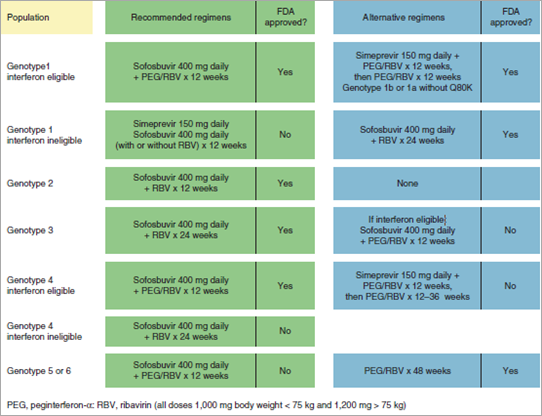
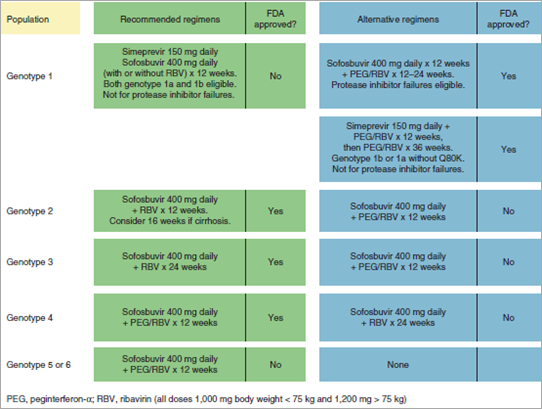
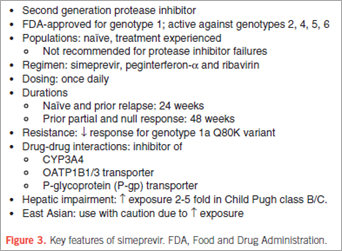

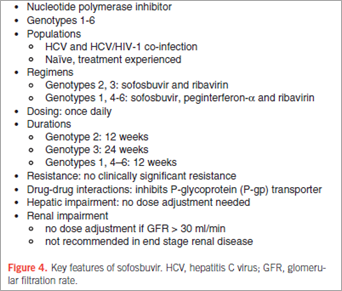

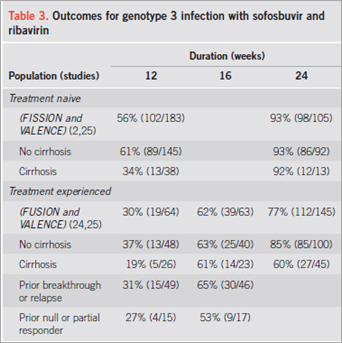
No comments:
Post a Comment